Read all of art critic David Apatoff’s columns here.
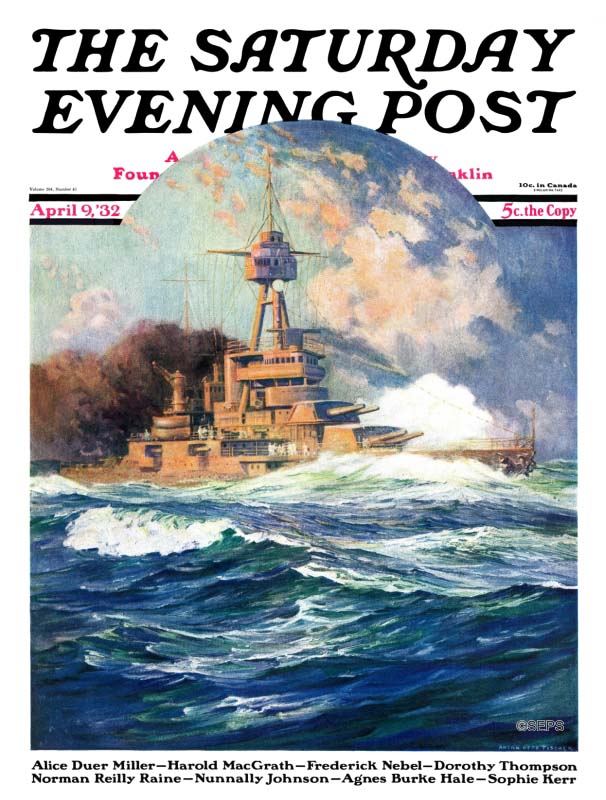
The Saturday Evening Post prided itself in selecting the best artistic talent to illustrate its popular stories. Its readers were very demanding, and delighted in pointing out the smallest errors in stories or pictures, so the Post sought artists with authentic experience. To paint its western stories, the Post preferred artists who had actually lived or traveled out West and seen the sights first hand. For its stories about socialites, it hired artists who were comfortable wearing tuxedos at nightclubs and high society parties. For adventures about trains or cars, it employed artists who genuinely loved and worked with vehicles.
When it came to stories about the high seas, they called on Anton Otto Fischer.
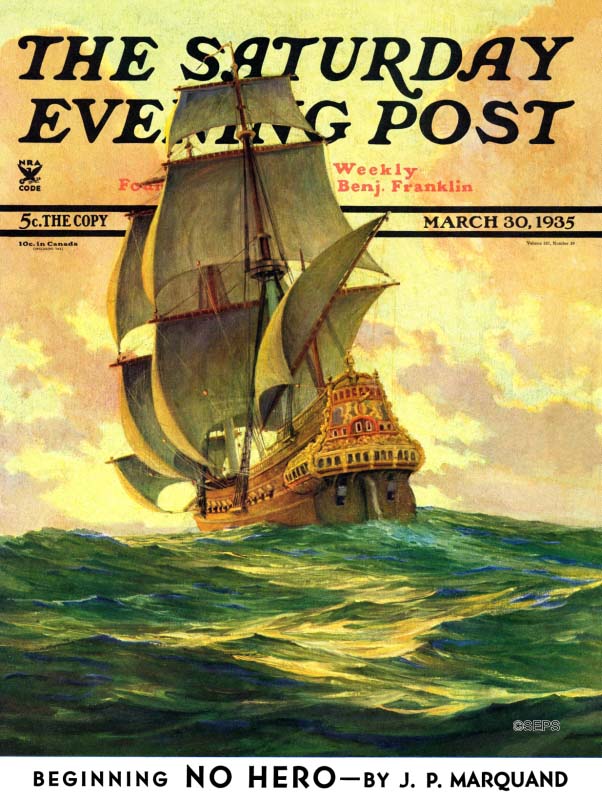
Fischer was born in Germany in 1882. He was orphaned at age five and sent away to a Christian charity orphanage. The boy loved art, but the orphanage had other plans for him: they trained him for the priesthood and when he reached the age of 12, placed him in a monastery. Fischer was miserable there, so one night he ran away, taking temporary refuge at the home of a sympathetic uncle in Munich before escaping to the sea.
Fischer’s first job was as a deckhand on a Dutch merchant ship. Over the next five years, he sailed on a Norwegian lumber bark, a Swedish steamer ship, and finally on a German trawler. In 1902 his ship docked in New York Harbor, and Fischer saw his golden opportunity. He jumped ship, leaving behind his wages and friends for a fresh start in America. He worked on crews for racing yachts while he applied for U.S. citizenship. Then it was back to the open sea, this time as a Merchant Marine.
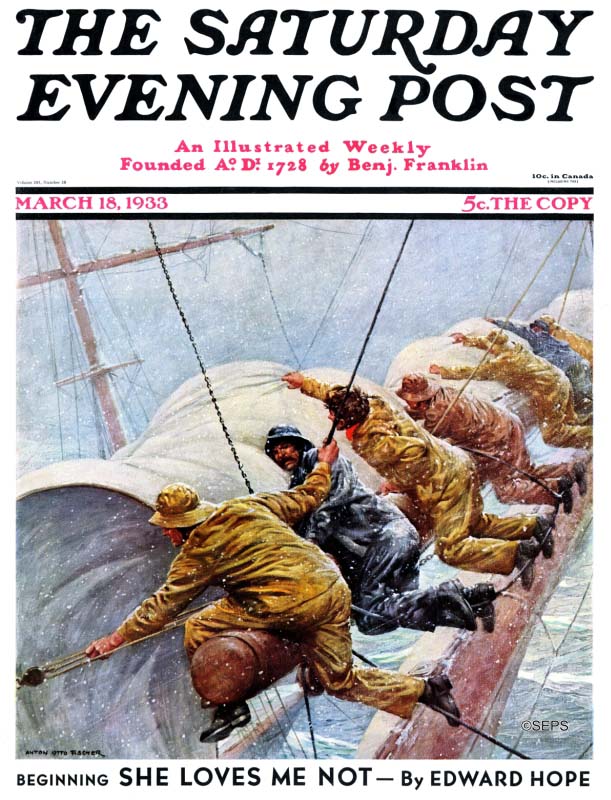
All the time he was working on ships, Fischer never forgot his dream of becoming an artist. When he returned to New York he found work as a handyman and eventually a model for the famous illustrator A.B. Frost. His job fueled his interest in art even more, so in 1909 Fischer moved to Wilmington, Delaware to spend a year studying illustration with one of the top art teachers in the nation, Howard Pyle. At Pyle’s art school, Fischer was introduced to accomplished illustrators such as Saturday Evening Post artists N.C. Wyeth and Harvey Dunn.
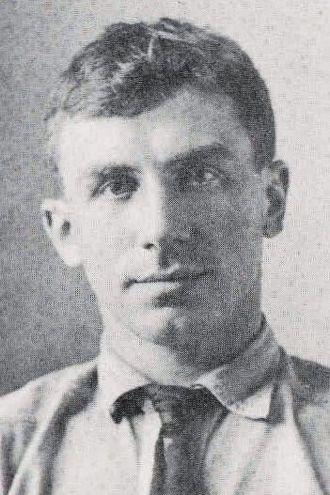
After his year in art school, Fischer returned to New York where he set up an art studio at 15 West 29th Street. He sold his very first illustration to Harper’s Weekly, then illustrated a story for Everybody’s Magazine. Later that same year, Fischer sold his first illustration to The Saturday Evening Post, beginning a professional relationship that would last 48 years.
Once he had a stable income, Fischer married Mary “May” Ellen Sigsbee Ker, another art student from Howard Pyle’s school. It’s quite possible that one of the things about May that appealed to Fischer was that she came from an eminent nautical family. May was the daughter of Rear Admiral Charles D. Sigsbee and the granddaughter of General Henry Hayes Lockwood, a founder of the U.S. Naval Academy.
Fischer’s earliest illustration assignments were of human interest subjects. He portrayed folksy Americana scenes of sports or pretty girls, friendly country folk, or children at play. However, his career really took off when art directors discovered his knack for painting maritime scenes. His pictures had the realism and authenticity of someone who had spent years at sea.
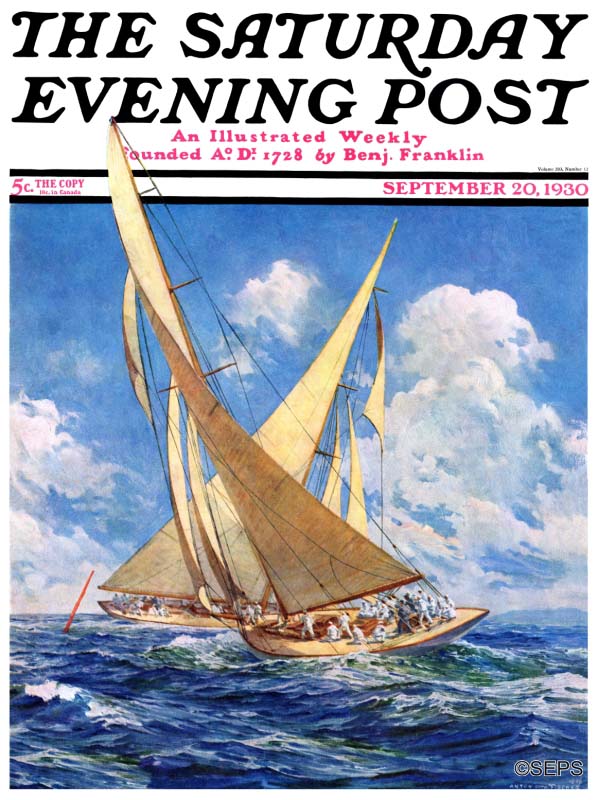
A lucky break came when Fischer was asked to illustrate a nautical story by the popular author Jack London. Fischer’s pictures were so well liked that he became the primary illustrator of London’s highly popular books and magazine stories for the rest of London’s life.
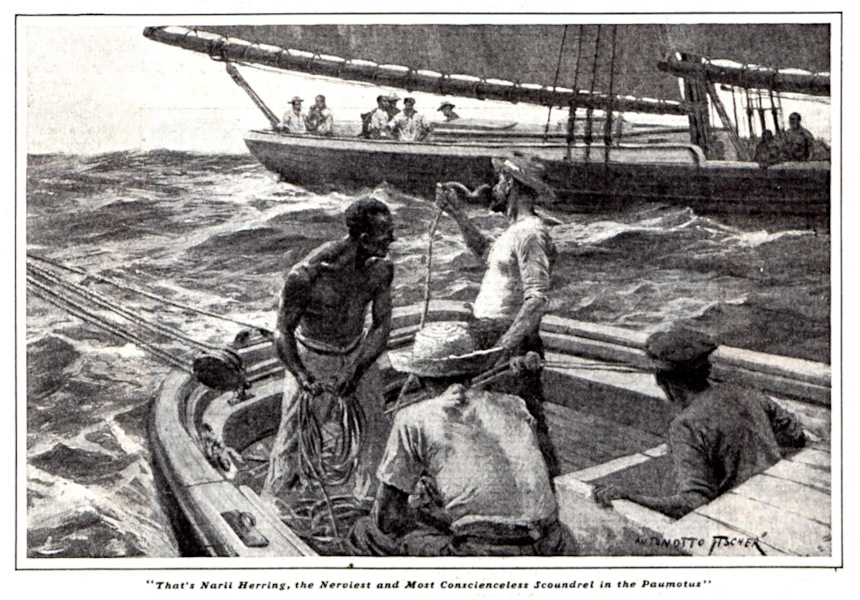
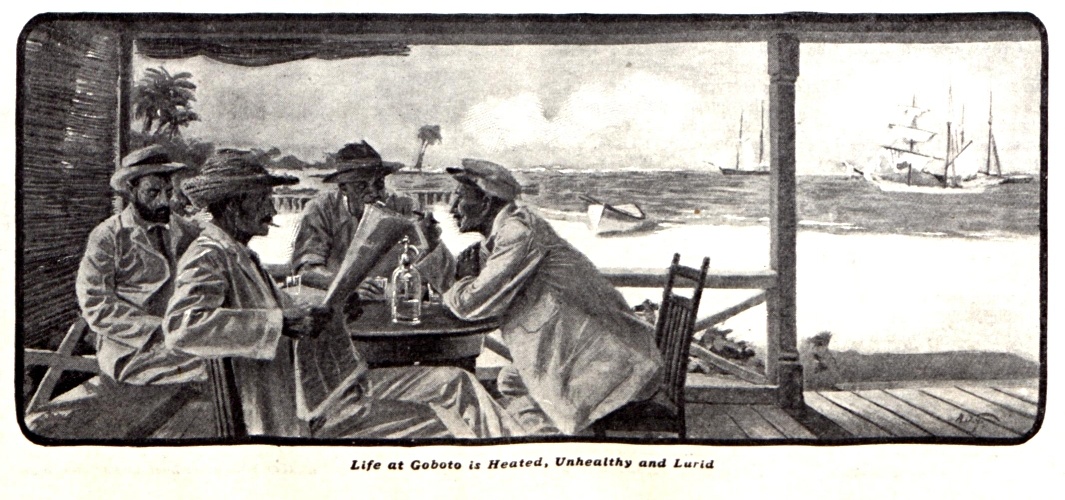
It didn’t take long for word to spread. Fischer’s extraordinary knowledge of the sea became apparent to art directors at the Post, Metropolitan Magazine, Cosmopolitan, and Harper’s Weekly. He painted shipwrecks and lifeboats, seascapes and naval battles for magazines such as Everybody’s Magazine, Munsey’s, The Popular, Argosy, Top-Notch, Short Stories, and Sea Stories. He also illustrated books such as Moby Dick, Treasure Island, and 20,000 Leagues Under the Sea. His work was in constant demand. Fischer’s art was also appreciated by fine artists of his era, and he became friends with well-known artists such as John Sloan.
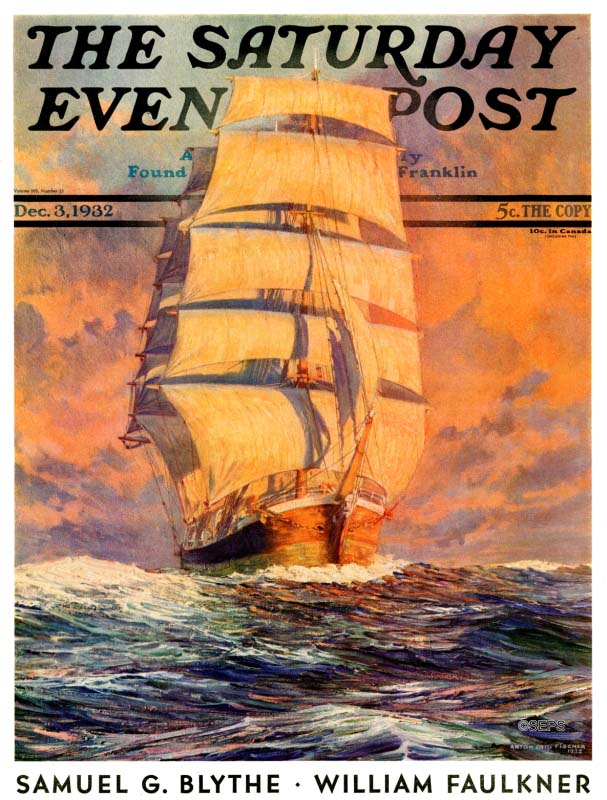
But by far, his primary forum was the Post, where he illustrated popular series such as Tugboat Annie in 1931. He painted a dozen covers, as well as over 400 story illustrations, the last of which appeared in 1956.
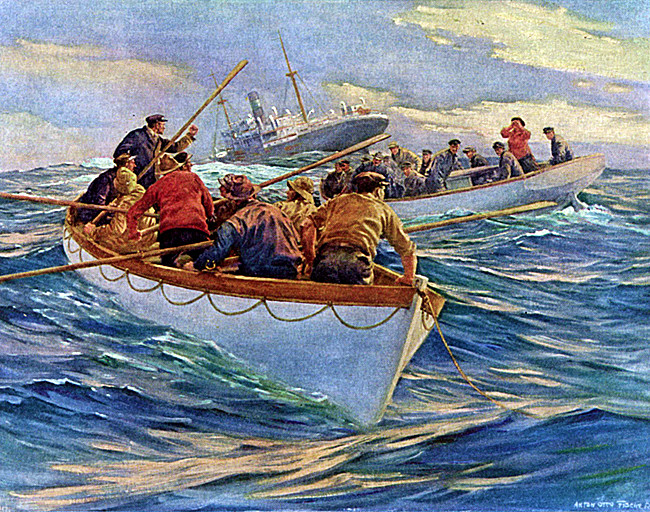
Fischer never served in the armed forces, but during World War I he painted patriotic posters for the U.S. Coast Guard. U.S. Navy Commander Lincoln Lothrop proclaimed to Fischer: “You are responsible for recruiting many a seagoing lad.” Fischer maintained strong ties with the Navy and Coast Guard, and after the U.S. entered World War II Fischer was given the formal rank of Lieutenant Commander in the Coast Guard as “Artist Laureate.”
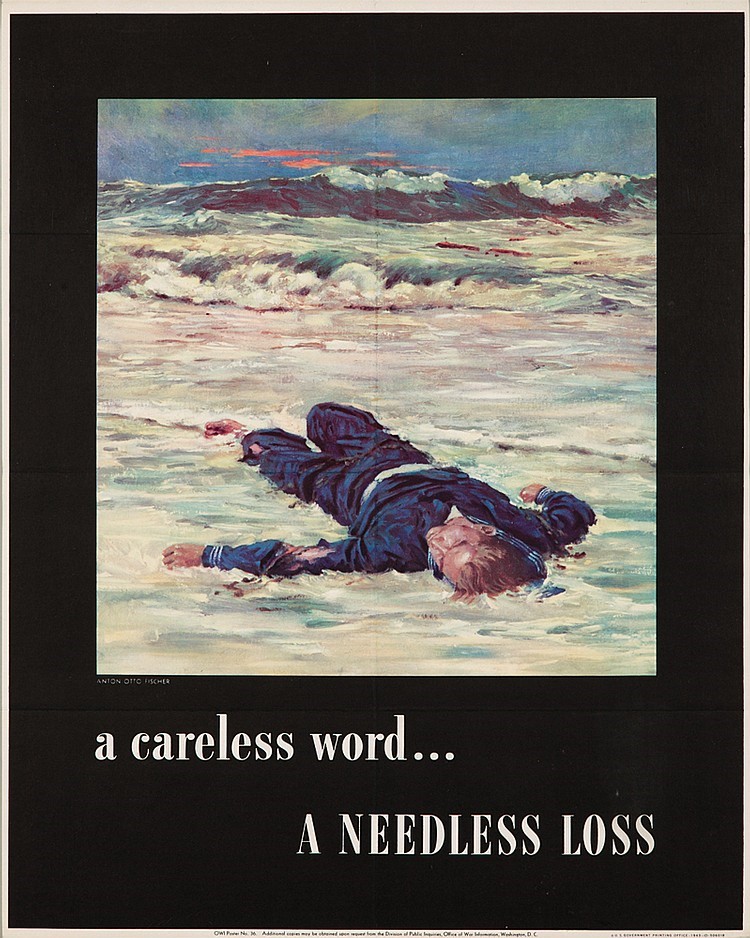
He again painted posters to support the war effort, but this time he also went to sea as part of a Coast Guard convoy patrolling the North Atlantic. One night Fischer was in the middle of celebrating his birthday with the crew when his ship spotted a German U-boat at close range. The ship opened fire and a full-scale night battle followed. Fischer’s birthday cake was left uneaten as the crew manned their stations, firing at the U-boat again and again, finally sinking her. Fischer returned to port with more exciting memories to paint.
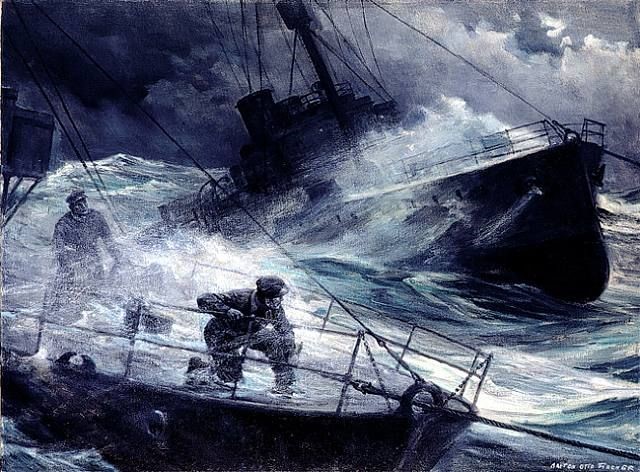
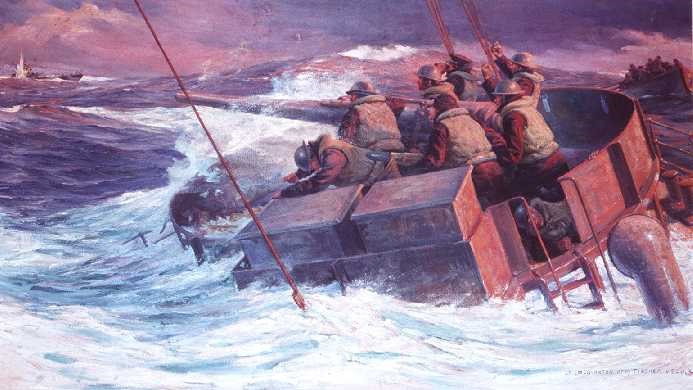
He passed away in his home in Woodstock, NY, in 1962 at the age of 80.
His artwork was archived in the Coast Guard Academy in New London, Connecticut.
Featured image: Detail, Saturday Evening Post cover, March 21, 1936 (©SEPS)
Become a Saturday Evening Post member and enjoy unlimited access. Subscribe now
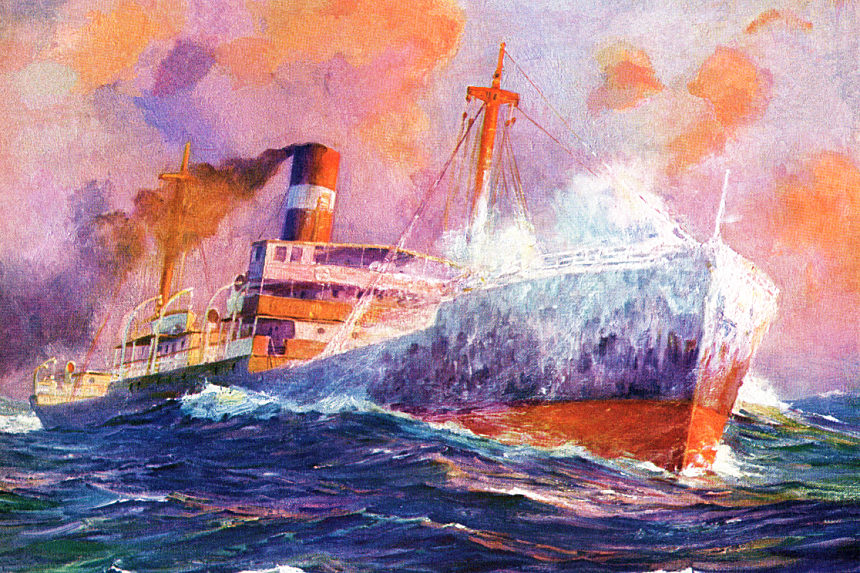


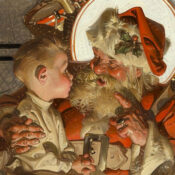
Comments
Hello,
You would get access to our digital archive of magazine issues dating back to 1821 (the archive is not complete, as there are some issues from the 1800s that are missing). The archive is browsable, but not searchable. Individual magazine pages are viewable, but not downloadable. Thank you for your interest!
Hello,
I am Dutch but I like the works and paintings of AOF. If I subscribe and probably have to pay, do I get acces to the works used for the Saturdayg Evening Post?
Looking to your answer, sincerely yours
Bart Reindersma
Another great feature on a uniquely talented Post artist. All of the beautiful covers and story illustrations here are very authentic and real. His life story is fascinating with the twists and turns it took that led him to being such a sought out illustrator for so many publications!
The article also gives an interesting insider’s look at the process of how the Post chose the specific artist it needed for a particular cover. I didn’t realize the magazine’s readers were that choosy, fussy or frankly nasty about pointing out what they (anyway) perceived as errors. Too much time on my hands is a problem I should be so lucky to have.